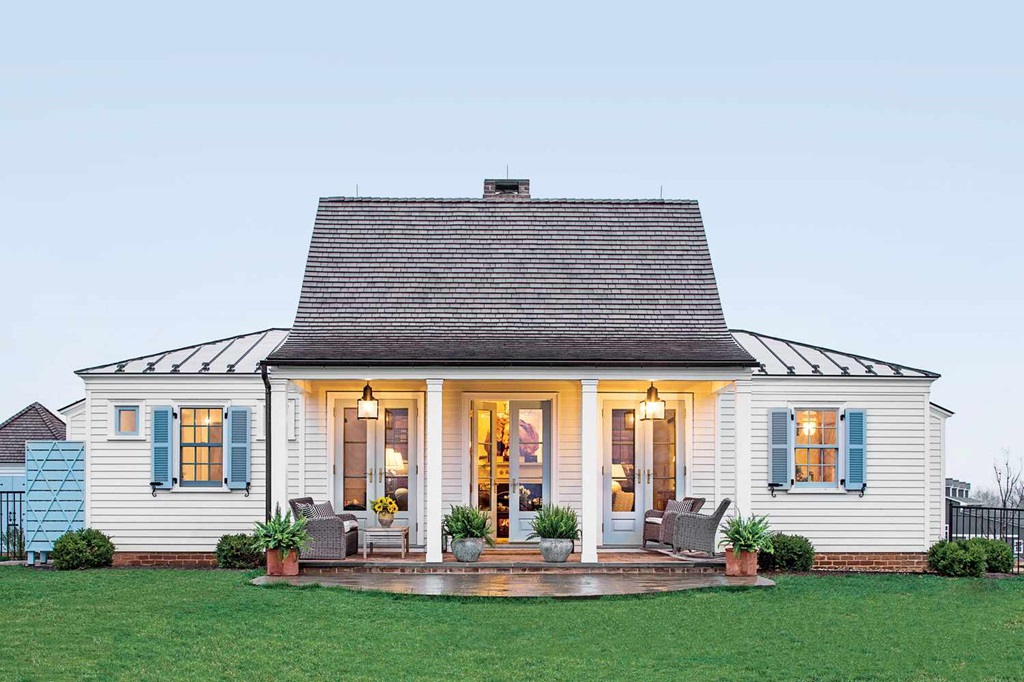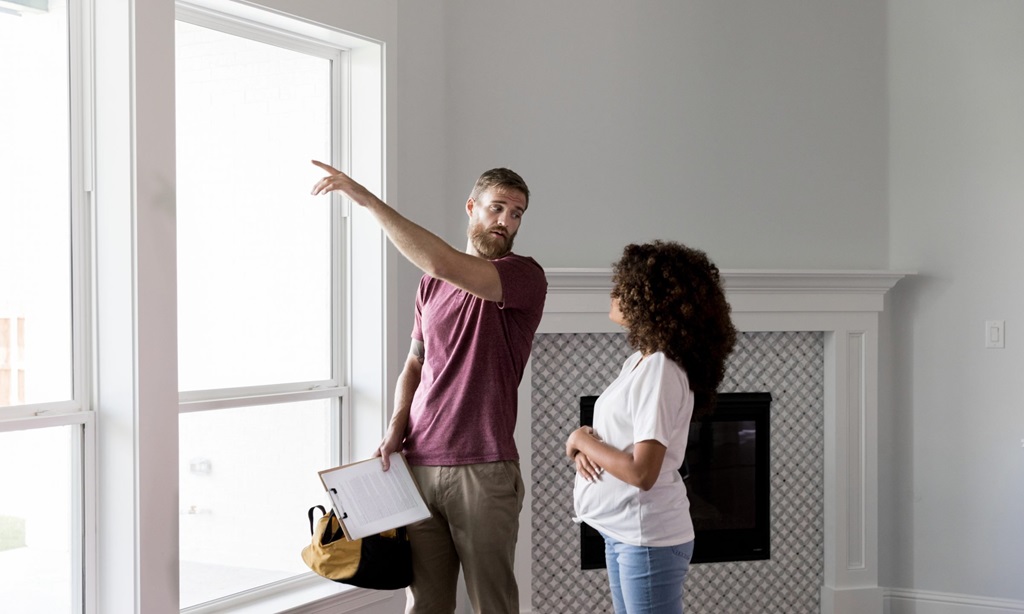
01 Jan How to Prepare 1200 Square Feet Buying Plan?
Buying a 1200 square feet home is an exciting milestone that requires careful planning and preparation. With some strategic thinking and research, you can create a solid buying plan to find your dream home. This guide will walk you through all the key steps involved in preparing for a 1200 square feet home purchase.
Determine Your Budget
The very first step is to figure out your budget. This will determine the location, size, and type of home you can afford. Think about these factors when deciding your budget:
- Down payment amount – Plan for a 20% down payment if possible to avoid private mortgage insurance (PMI).
- Mortgage payments – Get pre-approved for a mortgage and use online calculators to estimate your monthly payments. Account for property taxes, insurance, and HOA fees if applicable.
- Closing costs – These average 2-5% of the total home price. Factor in title fees, appraisal/inspection fees, attorney fees, etc.
- Moving costs – Estimate costs for movers, rental trucks, packing supplies, utility connections, etc.
- Home repairs & maintenance – Budget 1-3% of the home’s value annually for ongoing costs.
- Lifestyle expenses – How will a new home affect your monthly spending on commuting, utilities, furnishings, etc?
Set your maximum budget based on what you can comfortably afford each month while still meeting your other financial goals. Prioritize must-haves versus nice-to-haves.
Choose a Location
With your budget in mind, start exploring different neighborhoods and cities to narrow down your preferred location. Consider things like:
- Commute time to work, school, or other frequent destinations
- Proximity to amenities like parks, restaurants, grocery stores, etc.
- Quality of schools if you have children
- Safety, crime rates, and general livability
- Local home prices and property taxes
- Noise levels on streets and nearby neighborhoods
- Opportunities for appreciation over time
- Access to public transportation if needed
Drive around your top areas during different times of day. Get a feel for the vibe, parking, traffic, and community.
Select Your Ideal Home Type & Features

Now that you’ve budgeted and located, decide on your preferred:
- Home type – Single family, townhouse, condo. Consider maintenance.
- Number of bedrooms & bathrooms – Accommodate your family’s needs.
- Architectural style – Colonial, modern, ranch, etc.
- Amenities – Garage, yard space, basement, fireplace.
- Upgrades – Hardwood floors, stainless steel appliances, granite countertops.
- Smart home technology – Home automation systems, lighting controls.
- Age of home – Older homes have more charm but need more repairs. Newer builds need fewer updates.
- Green features – Energy efficiency, solar panels.
Create a prioritized home features wish list. This will give you an idea of how to allocate your budget across must-haves and nice-to-haves.
Get Pre-Approved for a Mortgage
Work with a lender to get pre-approved for a mortgage in advance. This shows sellers you are serious. To get pre-approved you’ll need to:
- Allow the lender to run a credit check and review your financial history.
- Provide documents to verify your income, assets, employment, and debts.
- Select the mortgage type (fixed-rate, ARM) and term (15 or 30 years).
- Lock in an interest rate for up to 90 days.
- Obtain a pre-approval letter with the maximum amount you are qualified to borrow.
Getting pre-approved ahead of time will make the purchase process smoother. You’ll know your price range and how much cash is needed upfront.
Research Mortgage Rates & Programs
As you search for homes, stay on top of mortgage rates and look into special programs that fit your situation.
- Check rates daily as they fluctuate. Lock in the lowest rate possible.
- Ask about first-time homebuyer programs that offer lower down payments or interest rates.
- Inquire about special loans or grants for military families, doctors, teachers, etc.
- Look into options like VA, FHA, USDA, and renovation loans.
The right program can positively impact affordability. Discuss options with your lender.
Line Up Your Real Estate Agent
A trusted real estate agent is your guide throughout the home buying process. Ask friends for recommendations and interview a few agents before selecting one. Look for someone who:
- Has in-depth knowledge of the local market.
- Will give you honest input on houses and neighborhoods.
- Responds quickly and keeps you informed every step.
- Represents your needs well during negotiations.
- Has glowing reviews from past clients.
A great agent utilizes their connections and experience to help you find and acquire your ideal home. Lean on them as your ally.
Get Ready to Make an Offer

As you prepare to visit homes, get all your ducks in a row to make an offer whenever the right one comes along:
- Have your down payment and closing cost funds ready – Speak to your lender about the best accounts and documentation.
- Get pre-approved at your maximum budget – This shows sellers you can pay your proposed amount.
- Review sales trends – Your agent can advise you on competitively priced offers based on recently sold comparable homes.
- Draft a sample offer letter – Fill in the blanks so it’s ready to go when you find “the one.”
- Research negotiating tips – Strategize with your agent on tactics if you receive a counteroffer.
- Know your deal-breakers – Be clear on what you can compromise vs. walk away on.
Proper preparation will make your offer more appealing and the negotiations smoother.
Search Online Listings
Now it’s time for the fun part – finding potential homes! Utilize online listing sites like Zillow, Trulia, and Realtor.com to browse homes for sale that fit your criteria.
- Set up daily email alerts for new listings. Be among the first to see homes that hit the market.
- Use filters like price, location, square footage, amenities, age, etc to narrow your search.
- Look at as many listing photos and videos as possible to get a feel for layouts and finishes.
- Take notes on must-haves vs. flexible features for each home.
- Drive by addresses that interest you to evaluate the neighborhood.
- Ask your agent detailed questions about shortlisted homes.
Internet searches allow you to easily hone in on options worth pursuing.
Attend Open Houses
Open houses are a useful way to get first-hand perspective. You can chat with the listing agent, view decor, assess renovations needed, check for odors/leaks, and more.
- Find open house listings in advance and map out a plan. Prioritize must-see homes.
- Take photos/videos to remember details of each home. Jot down notes.
- Introduce yourself to the agent and ask questions about the home’s history and features.
- Visualize where your furniture and belongings would fit.
- Discuss impressions afterward with your buying agent.
Visiting open houses provides insights you just can’t get online. Take advantage of accessing homes in real life.
Schedule In-Person Touring
When you find homes to seriously pursue, schedule showings through your agent.
- Ask to see the home at a time that lets you visualize your daily routine – morning, evening, etc.
- Request second visits to shortlisted homes at different times of day.
- Bring tools like a measuring tape, outlet tester, flashlight, and camera.
- Take extensive notes on your user experience in each room.
- Inspect thoroughly for any maintenance needs or problems. Discuss with your agent.
- Ask your agent detailed questions about each home and neighborhood.
It’s important to spend quality in-person time in homes before committing to buy.
Order a Home Inspection

Before finalizing an offer, make it contingent on a professional home inspection to uncover any hidden defects or problems.
- Hire an experienced, licensed inspector to perform a thorough technical and safety evaluation.
- Request they scrutinize the roof, foundation, electrical, plumbing, HVAC, major systems, structure, etc.
- Attend the inspection to see issues first-hand and ask questions.
- Get a detailed inspection report listing repairs needed and their estimated costs.
- Negotiate credits or fixes for inspection findings after reviewing with your agent.
An inspection provides objective insights into the shape of the home and protects against purchasing a “money pit.”
Finalize Mortgage Details
As you get closer to purchase, double check mortgage specifics with your lender.
- Confirm required down payment amount and total closing costs.
- Verify you have the lowest available interest rate and have applied for relevant credits/discounts.
- Review the projected monthly payment including principal, interest, taxes, and insurance.
- Understand next steps once your offer is accepted such as completing loan documents.
- Ask for final pre-approval based on the purchase price of the home you’re offering on.
- Check that your DTI ratio still falls within lender guidelines if anything about your financials has changed.
Button up financing details so there are no surprises at closing time.
Make Your Offer
When you find a house you’re ready to buy, it’s time to make an enticing offer.
- Your agent will fill out the purchase agreement with key details like offered price, contingencies, amount of earnest money deposit, etc.
- Submit documentation pre-approving your mortgage amount.
- Write a personal letter to share your background and connection to the home.
- Request any repairs you would like the seller to consider funding.
- Make a strong offer by going slightly over comparable sales if needed. But don’t overextend your budget.
- Be prepared to negotiate if you receive a counteroffer.
The right offer price and terms can give you an advantage over other buyers.
Conduct Final Walk-Through
Shortly before closing, schedule a final walk-through of the vacant home to ensure condition and terms were fulfilled.
- Verify seller completed agreed upon repairs and removed all items specified in contract.
- Check that hardwired systems like alarm, electrical, and plumbing are still in working order.
- Request utilities be turned on to test appliances like HVAC. Run water to check for leaks.
- Look for signs of damage during moving like holes in walls or stains.
- Ensure the home is vacant and broom clean as required.
- Discuss any concerns with your agent to handle before closing.
The final walk-through provides peace of mind that you are getting what you paid for.
Close and Move In

Congratulations, you’ve made it to closing day! Follow these final steps:
- Attend the closing appointment with required funds and documentation handy.
- Bring valid identification and make copies.
- Review documents carefully before signing. Ask for explanations of anything unclear.
- Pay your down payment, closing costs, and prepaid items like insurance and property taxes.
- Collect keys, garage door openers, appliance manuals, warranties, and other items from seller.
- Change locks if desired for safety.
- Complete final walk-through of empty home before move-in day.
- Update your driver’s license, vehicle registration, utilities, insurance policies, and more with new address.
- Stock up on cleaning supplies, tools, trash cans, shower curtains and other home basics.
Enjoy this monumental moment in your new home sweet home!
Summary of Preparing for a 1200 Square Feet Home Purchase
The key steps involved in strategically preparing to buy a 1200 square foot home include:
- Determining your total home buying budget based on savings, income, and expenses.
- Researching locations that align with your lifestyle and commute.
- Defining your preferred home design, amenities, age, etc.
- Getting pre-approved for a mortgage in advance.
- Lining up a knowledgeable real estate agent to represent you.
- Making an offer ready with funds and pre-approval letter.
- Utilizing online listings and touring open houses.
- Inspecting shortlisted homes thoroughly before making an offer.
- Negotiating any repairs needed based on a professional inspection.
- Finalizing mortgage details and terms shortly before closing.
- Completing a satisfactory final walk-through.
With proper budgeting, planning, and preparation, you can find and buy your ideal 1200 square foot home!
FAQs
Q1: How much down payment do I need for a 1200 square foot home?
Most lenders require a minimum down payment of 5-20% of the purchase price. For a $300K home, that’s $15K-$60K. Save up a 20% down payment if possible to avoid paying private mortgage insurance.
Q2: How much should I budget for a 1200 square feet house?
Factor in the down payment, closing costs (2-5%), required mortgage payments, property taxes, insurance, HOA fees if applicable, moving costs, furnishings, and 10-15% extra for repairs and regular maintenance. Budget $350K-$450K.
Q3: How can I find 1200 square feet homes for sale?
Search real estate listing sites like Zillow and Realtor.com using filters for location, price, beds/baths, square footage, etc. Drive through target neighborhoods and call “For Sale by Owner” signs. Check for open houses.
Q4: Should I buy a foreclosure as my first 1200 square foot home?
Buying a foreclosure or distressed home costs less but requires more improvements. Consider if you can handle those projects as a new homeowner. Get an inspection to assess issues.
Q5: How long does it take to buy a new 1200 square foot home?
From starting your search to closing day typically takes 2-3 months. Allow time to save a down payment, get pre-approved, view homes, make an offer, inspect, and secure financing prior to closing. The more prepared you are, the quicker the process.

Sorry, the comment form is closed at this time.